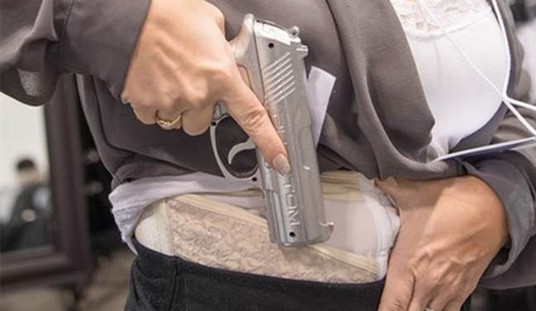Law enforcement officers may be faced with a wide range of violent crimes, and officers are often faced with very limited time and options to contain a situation before violent suspects send a situation spiraling even more dangerously out of control.
Suspect Mario Valencia had stolen a rifle and ammunition from a Walmart, broken into and then set fire to a church, before committing a home invasion and a car theft before finally being located by officers walking towards a Coca Cola bottling facility with employees hiding inside.
Valencia held the gun under his chin—effectively holding himself hostage—then fired a shot into the air in an apparent attempt to show cops that he meant business. Officers feared that he was going to get inside the bottling facility and take hostages.
As the officer trailing the suspect advocates caution and warns off another squad car ahead of him after Valencia fired the shot, you suddenly hear the roar of a powerful engine, and another police cruiser flashes past to bring the pursuit to a dramatic end.
Marana Police officer Michael Rapiejko—a Crossfit devotee nicknamed “Robocop” for his intense workout regime—clipped Valencia with his squad car, sending Valencia flying through the air to bring the crime spree to an end. Rapiejko’s cruiser then smashes through a cinderblock wall before coming to a halt. The pursuit is over, the threat to the hundreds of people working in the bottling plant ended.
While Valencia’s lawyer cried that Rapiejko’s decision to use his cruiser to end Valencia’s crime spree was excessive force, Rapiejko was cleared of any wrongdoing in the February 19 incident. Valenica was clearly a deadly force threat, and while Rapiejko’s solution to use deadly force of his own was novel, it was also justified.
Valencia spent two days in the hospital, and now sits in jail facing multiple felony charges.
Why is this relevant to a page like Bearing Arms?
Rapiejko or any of the other officers converging on the scene would clearly be justified in opening fire with a sidearm or patrol rifle on Valencia as he continued towards the bottling facility full of potential victims, but Rapiejko made a split-second judgement call to use his vehicle instead, completely eliminating the risk of an errant bullet going downrange where it might hit someone in the bottling facility that is behind Valencia.
While ramming a suspect clearly isn’t something they teach in police academies, Rapiejko’s split second decision to use something other than his firearm eliminated the threat, without putting other lives at risk.
How does this apply to the average gun owner?
Self-defense scenarios are incredibly intense, emotionally charged affairs, and people sometimes get fixated on using their firearm as their only possible response to that threat. This has led to incidents where people either drew and used their weapons before there was a legitimate justification for using deadly force, or the opposite effect took over, and they froze up thinking about the consequences of using deadly force, and got seriously injured or killed by an aggressor with no such moral uncertainties.
If you have good situational awareness and are aware of your surroundings, you may be able to find alternatives to keep you from having to use deadly force.
While we all (hopefully) train to be proficient with our firearms, the best defensive gun use is the one you never had to have because you found a way to avoid it.







Join the conversation as a VIP Member